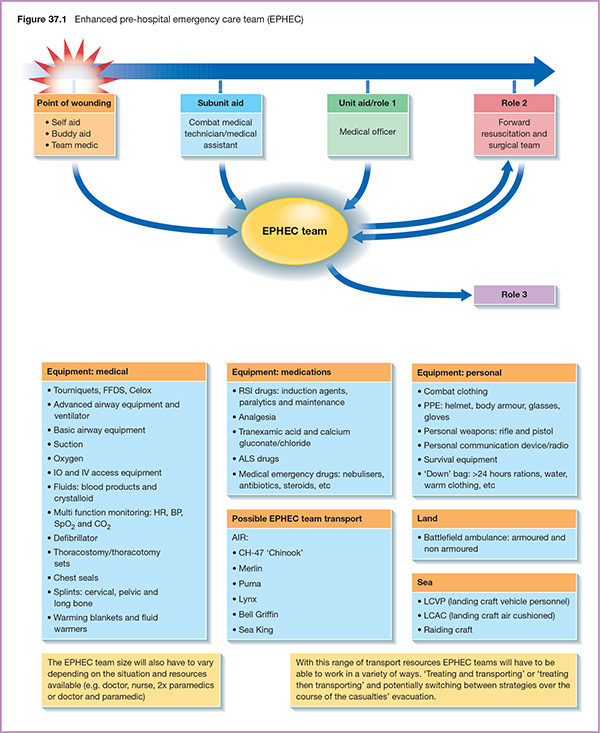37 Like its NHS counterpart, military pre-hospital emergency care is evolving. It is becoming more regulated and an increasing number of individuals have formal training in the field. The three services in the UK military have contributed individually to the speciality and have different requirements. However, the general approach for military pre-hospital care is similar, regardless of service or situation. Treatment and evacuation in the military is based on the C-ABCDE paradigm and a 1-2-4 hour timeline. Ideally, this means 1 hour to reach primary surgery. If this is not possible then it is 1 hour to reach a Battlefield Advance Trauma Life Support (BATLS) qualified individual, 2 hours to reach Damage Control Surgery (DCS) and 4 hours to reach primary surgery. The individual and team medical training that soldiers, sailors and airmen undergo facilitate the pre-hospital medical care that the military provides: Role 1:
Military pre-hospital emergency care

Process and capability
![]()
Stay updated, free articles. Join our Telegram channel

Full access? Get Clinical Tree








